1printf("Welcome to follow the public account: Vehicle Embedded Explorer. The blogger has established a vehicle-grade development communication group, friends who are interested can follow the public account and add personal WX: _kevin0123456789, remark: vehicle.");
2
Introduction:
The Ideal L9’s assisted driving software relies on self-research, with hardware including laser radars and multiple high-definition cameras. The computing platform includes two NVIDIA Orin-X processors, with a total computing power of 508 Tops, achieving full-scene navigation assistance driving functions. L9 intelligent driving sensor scheme: – 1 128-line laser radar– 4 360° panoramic cameras (2 million pixels)– 7 auxiliary driving perception cameras (6 of 8 million, 1 of 2 million)– 2 NVIDIA Orin X processors (508 TOPS computing power)– 5 intelligent driving auxiliary lightsThe core information of the autonomous driving domain controller is as follows:Physical image
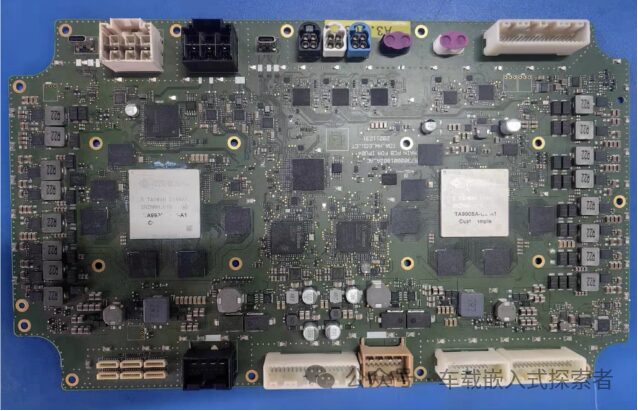
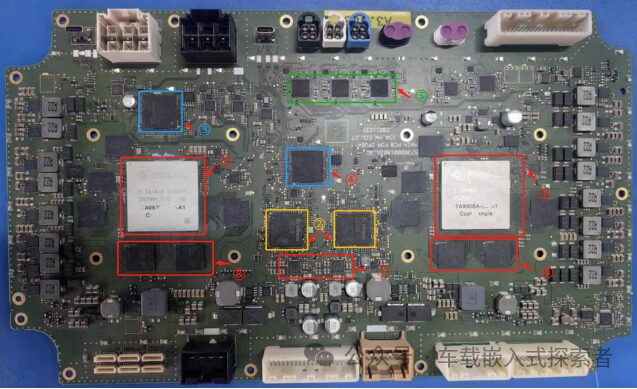
1. SOC-Orin
NVIDIA’s TA990SA is NVIDIA’s edge computing series chip Jetson Orin.
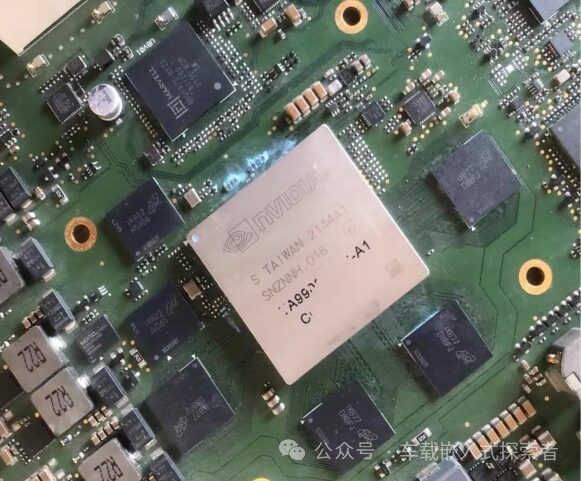
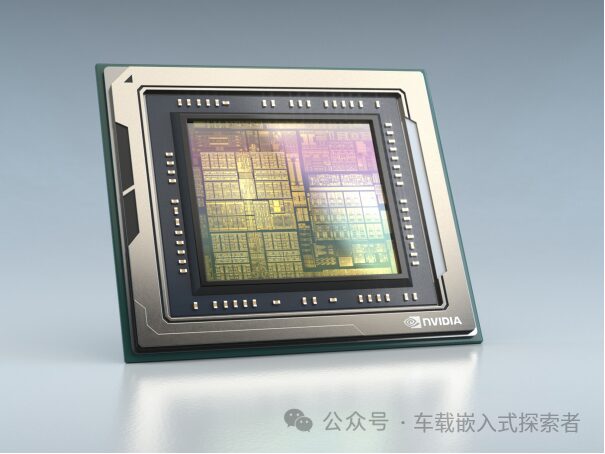
Introduction to Orin: In December 2019, NVIDIA released the new generation of Orin chips and computing platforms for autonomous driving and robotics, with a maximum computing power (INT8) reaching 200TOPS. Orin SoC adopts a 7-nanometer process, consisting of an Ampere architecture GPU, ARM Hercules CPU, second-generation deep learning accelerator DLA, second-generation visual accelerator PVA, video codec, and wide dynamic range ISP, while introducing automotive-grade safety island design. The following figure shows the system architecture of Orin SoC.
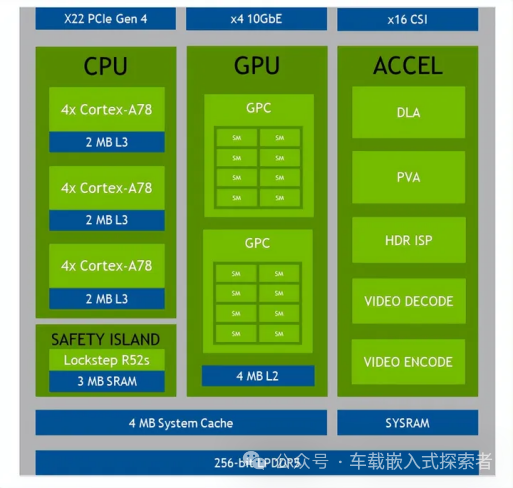
The specific hardware parameters are as follows:
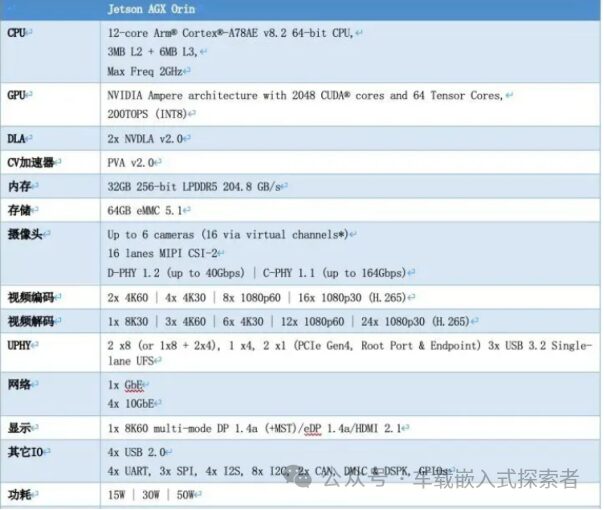
Production models of Orin include: SAIC’s R and Zhiji, Ideal L9, NIO ET7, Xpeng’s new generation P7, WM M7, BYD Tengshi N7, Yangwang U8, Volvo XC90, Xiaomi SU7, etc.
2. MCU-TC397
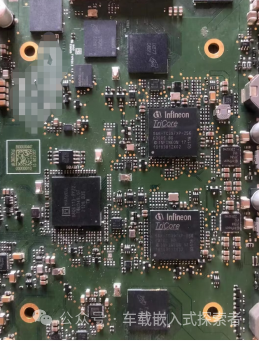
AURIX TC397 structure block diagram:
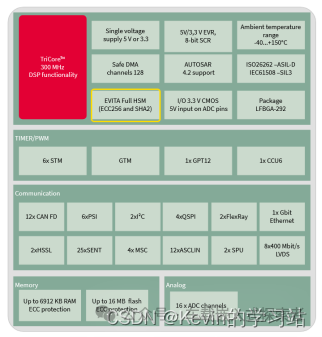
TC397XM application features: ①, 6 TriCore™, frequency up to 300MHz, with DSP function ②, all cores support floating-point and fixed-point functions ③, up to 16MB of flash memory, with ECC protection ④, 1024 KB EEPROM, 500k cycles ⑤, up to 6.9MB of RAM, with ECC protection ⑥, 4x 12-bit SAR ADC converters ⑦, Ethernet 1 Gbit ⑧, supports FlexRay, CAN-FD, LIN, SPI ⑨, redundant and diversified timer modules (GTM, CCU6, GPT12). A, programmable HSM (hardware security module), all EVITAB, external memory interface C, high-speed serial interface (HSL) for inter-processor communication. D, high-speed tracking port 2.5Gbit/s E, single voltage supply 5V or 3.3V
3. Switch
The role of the switch: ①, connect multiple Ethernet physical segments, isolate conflict domains ②, perform high-speed and transparent switching forwarding of Ethernet frames ③, self-learn and maintain MAC address information 3.1, 88Q5072 corresponds to label ③ in the figure; Marvell®88Q5072 is the first generation of high-port automotive Ethernet switch, with 11-port gigabit Ethernet capacity. It fully complies with the IEEE 802.3 automotive standard and provides low-power high performance. 88Q5072 offers 7 integrated IEEE 100BASE-T1 PHYs with 6 fixed 100BASE-T-1 ports. The 7th port can be configured as 1x IEEE 100BASE-TX PHY, 2x multi-speed SerDes (1/2.5/5Gbps) or SGMII port, 1x RGMII or MII/RMII/GMII, 1x PCIe or SerDes. It also provides local and remote management features, providing easy access and configuration of the device. This 88Q5072 includes a high-performance ARM®Cortex M7 CPU, with dedicated on-chip memory, supporting AVB protocols such as Precision Time Protocol (PTP) and security firewalls to prevent external malicious attacks. It uses an advanced routing engine to support gigabit routing of incoming packets without CPU intervention. It provides the highest level of security for vehicle networks through deep packet inspection (DPI) technology, denial of service (DoS) engine, and trusted boot capabilities. Main features: ①, integrated ARM Cortex-M7 CPU, 350MHz ②, advanced security features including deep packet inspection engine, dedicated DoS (denial of service engine) and multiple keys for secure boot ③, hardware support for layer 3 static routing ④, integrated 100BASE-T1 PHY and low power of switch core ⑤, supports fast PCI Express interface connection for host ⑥, AEC-Q100 level 2 qualification ⑦, TC10 sleep/wake compliance Physical image

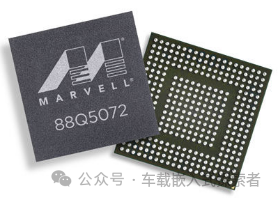
System block diagram
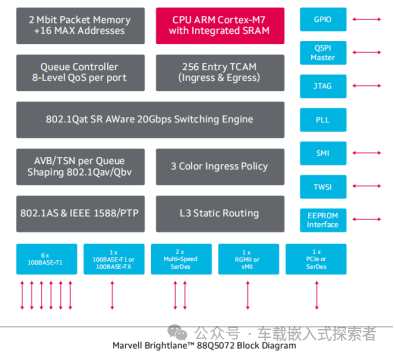
4. GMSL De-serialization Chip
Corresponding to label ⑤ in the figure.
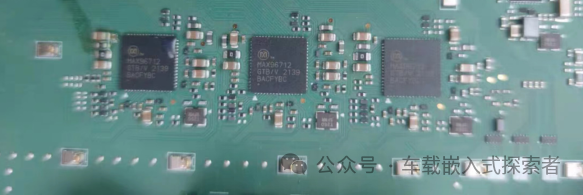
GMSL de-serialization signal: Maxim’s MAX96712. ①, GMSL IntroductionGMSL: Gigabit Multimedia Serial Link is a high-speed serial interface launched by Maxim for the transmission of video, audio, and control signals, using 50Ω coaxial cable or 100Ω shielded twisted pair cable, with transmission distances of up to 15m or longer. The following figure shows the advanced architecture of GMSL.

GMSL is specifically designed for Advanced Driver Assistance Systems (ADAS) and Camera Monitoring Systems (CMS). It can provide video transmission speeds of up to 6 GB/sec. It uses STP or coaxial cables, both of which are low-cost and very robust against EMC interference. The MAX96712 chip is an automotive-grade 4-channel serial decoder, supporting serial speeds of 3Gbps and 6Gbps, and supports the first generation GMSL1 and second generation GMSL2 standards.
MAX96712 structure block diagram:
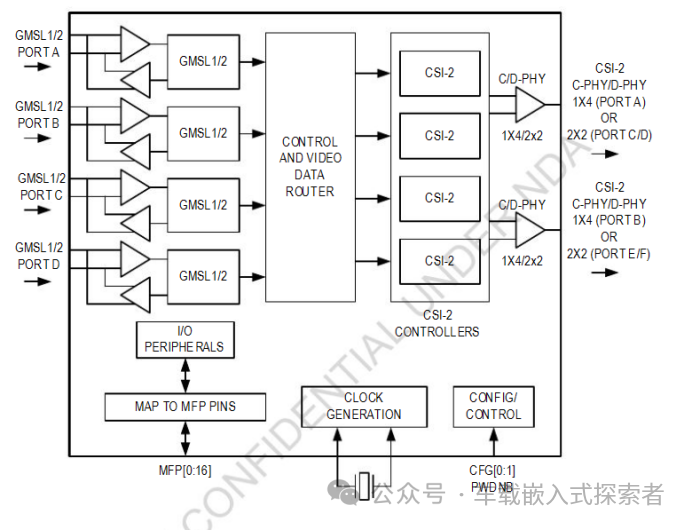
5. Storage
Corresponding to label ⑧ in the figure.
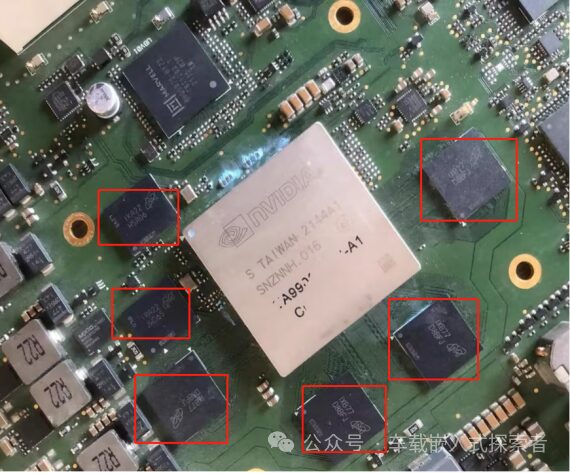
The storage chips used are Micron’s 2EEB77 D8BFJ*4 pieces, IKA22 HSA06, and IWA22 JWD65 chips.
Summary:
Why does the Ideal L9 dare to claim to be the best family SUV under 500,000? It can be seen that it spares no expense on the materials used in its autonomous driving domain controller. This domain controller from Ideal adopts the Desay SV’s IPU4 architecture, which is the same as the autonomous driving domain control of the new Xpeng P7 and the domain control framework of SAIC Zhiji. In the next issue, we will analyze the hardware scheme of the new Xpeng P7 autonomous driving domain controller.
The images in the article are sourced from the internet. If there is any infringement, please contact the author for deletion!
1printf("Welcome to follow the public account: Vehicle Embedded Explorer. The blogger has established a vehicle-grade development communication group,
2friends who are interested can follow the public account and add personal WX: _kevin0123456789, remark: vehicle.");